Review: Spyder5 monitor calibration system
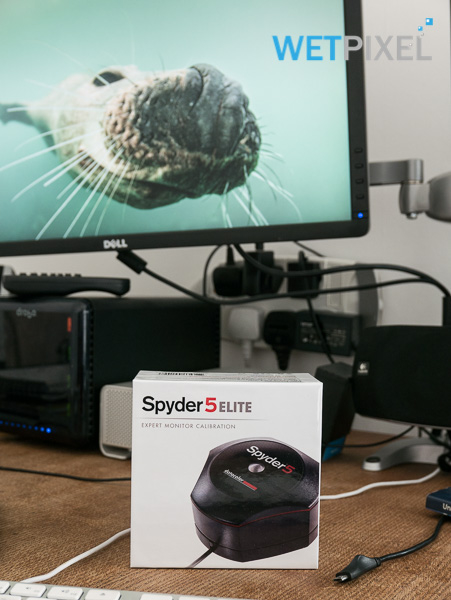
A question often asked by photographers is why their images appear different when they are printed or on different screens, even when the images have been soft proofed. To answer this simply, it is often because each monitor’s interpretation of an image’s color is different from that of another monitor, or that of a printer. As many photographers know, the key to ensuring consistency is to use a system of color management.

Why is color management so important for underwater imagery? One of the effects of light’s travel through water is that we lose wavelengths (colors) progressively as we increase depth, or decrease visibility. When we view images taken underwater, there is an inevitable color shift or cast towards the blue/green end of the spectrum. If our monitors do not reflect this accurately, this can result in our images either being very “washed out”, or more commonly, the blues become very dark or even purple. This is especially true with wide-angle images, and a cursory glance on channels like Facebook will show many images that are well composed and have interesting subjects, but are rendered unattractive by the way the colors have been processed.
A key feature of any color management system is to calibrate any monitors to ensure that the colors they are displaying are correct. There are several different devices available for doing this and for quite some time, I have used the Datacolor Spyder3PRO. Last week Datacolor launched their Spyder5 and invited Wetpixel to carry out a review.
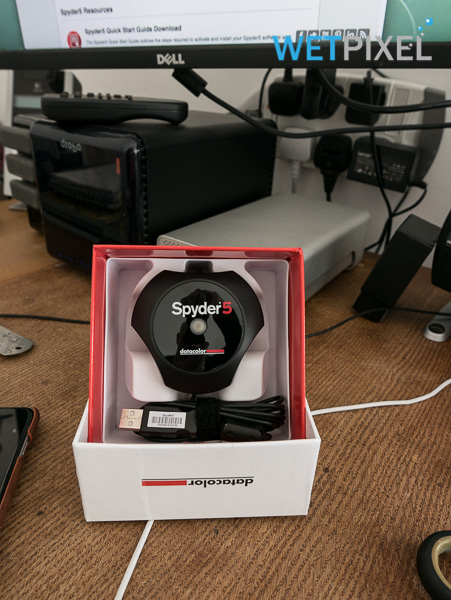
The Spyder5 consists of a small opto-electrical sensor or colorimeter that measures both the levels of ambient light, and the color output of the monitor, combined with a software package that allows the generation and adjustment of the color profiles that are generated. The colorimeter is much more compact that previous models and features a dual purpose lens cap and counterweight, improved tonal response and a 7 - detector optical engine. It is attached via USB to the computer and Datacolor recommend that this is not via a hub, monitor or keyboard USB port. There would be no problem packing this colorimeter for a trip away if one wished to, as it is very small and lightweight.
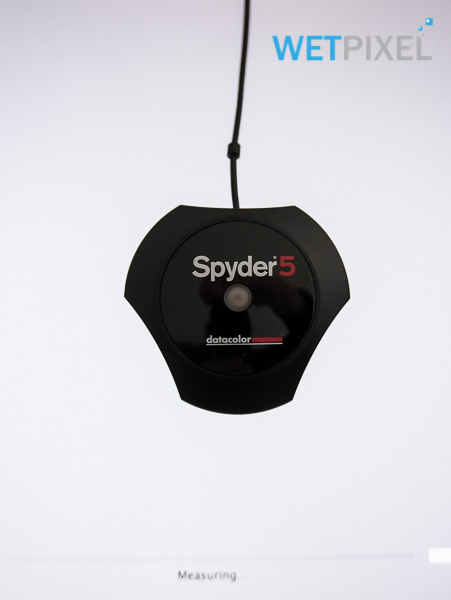
The software that is used to generate the color profiles is available in three versions: EXPRESS, PRO and ELITE. The EXPRESS version is designed for “hobbyist” photographers and offers a simple 4 step process that takes around 5 minutes to produce a profile. It will work with all laptop and desktop monitors. Essentially, it automates and simplifies the calibration process, allowing for minimal user input, which may often be a good thing!
The PRO version offers the features of the EXPRESS, but also has a wizard based calibration process and advanced options. It allows for “before and after” reviews of the newly generated color profile, can take readings of ambient light levels to ensure consistent viewing conditions and can use custom images for “before and after” comparison. Lastly, it allows the user to evaluate their monitors quality using a series of tests to ensure that their performance is not declining.
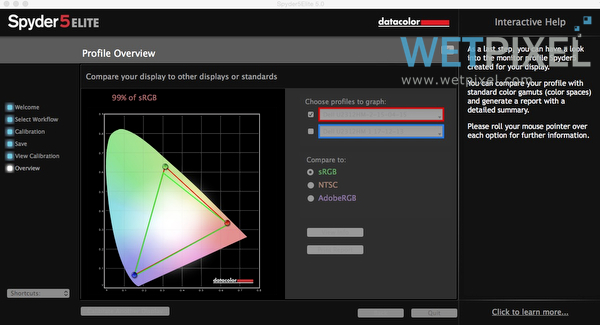
Similarly, the ELITE version has all the features of the PRO, but also can also be used to calibrate front projectors. It also gives the user unlimited manual control of the calibration process, can calibrate to video color standards for those editing video and offers more advanced options for checking monitor performance. Lastly, the app can be run in full screen mode.
Installation and activation
The Spyder5 ships with its serial number within the packaging, and a card detailing the link that is needed to access the Datacolor website. From there it is straightforward to download and install the relevant version. There are downloads available for each version of Spyder5 for Mac and Windows as appropriate, sized at 65-69MB for Windows users, and 49-61MB for Mac.
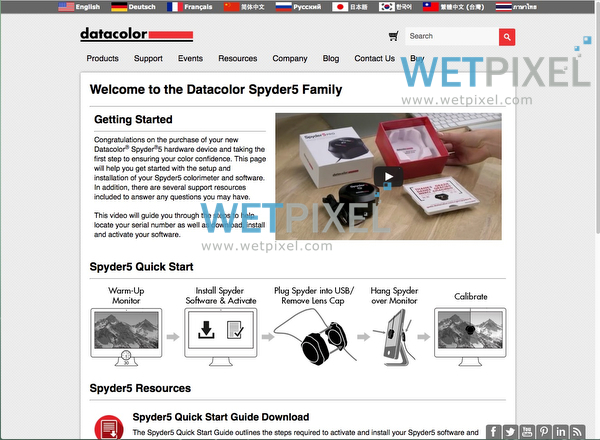
During the first boot of the software, it asks for the serial number and when this is entered, produces a license code. In use, I found both installing and activating the app very straightforward.

Calibration
The software asks a series of question about the monitor, lighting conditions, display controls and whether the Spyder is connected. In the ELITE versions, you then get the choice of using the “Step-by-Step Assistant” or wizard, to match studio monitors, or to use the “Expert Console” to perform the calibration. I actually find that for my purposes, the “Step-by-Step Assistant” is quite adequate to calibrate my monitors, but it is good to have the ability to view all the options on one screen via the Expert Console.
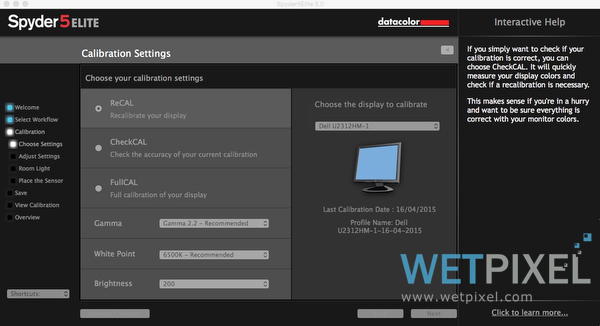
In both cases, the software give the option of recalibrating, checking the calibration and performing a full calibration. The CheckCal function provides a quicker way to ensure that your monitor’s performance has not drifted since the last calibration. This could be very useful if you are about to start processing a bunch of images and want to be sure that they will display/print correctly.
Once the monitors parameters are checked, the utility asks the colorimeter to take an ambient light measurement. It is important that it is left on the desk near the monitor in order to do this.
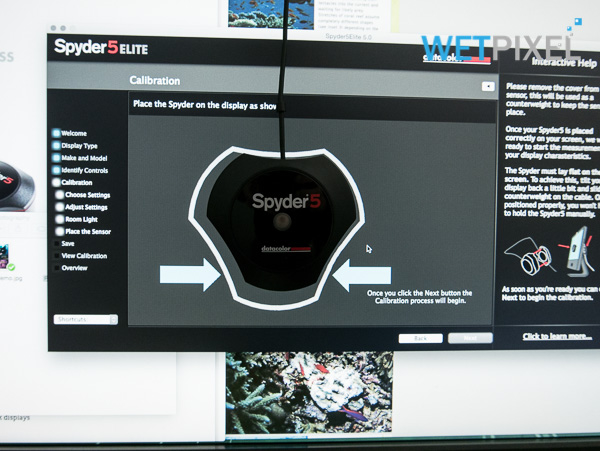
It will then ask the user to dangle the colorimeter over the screen, using its attached counter-weight to hold it in place and the guides on the screen to align it. It helps to tilt the monitor back slightly so that the colorimeter rests on its surface.
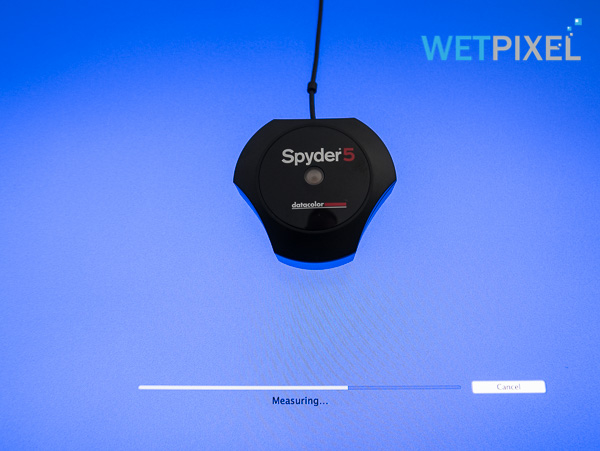
It then compares the actual light reading against the monitor brightness and if this is out by 4% or more, suggest that the monitors brightness be altered to bring it back into sync. Next, it performs the color calibration, showing a series of test colors patches, which the colorimeter reads.

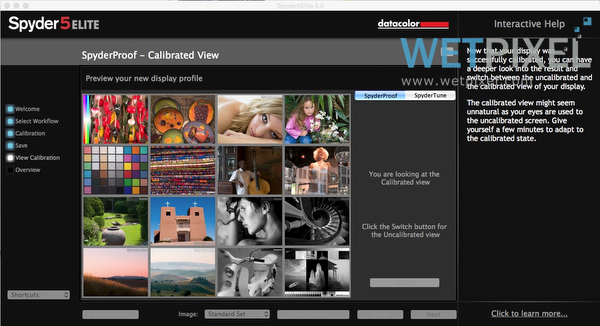
Once this has been completed, it will ask the user to click a “finish” button and to remove the colorimeter. Upon doing so, the software prompts you to enter a name for the new color profile it has generated (I use the date) and then to save it. The next screen shows the effect of this new profile on a test image. The image can be a custom one if required and there is a “before and after” option on the PRO and ELITE versions. The ELITE option also gives allows the comparison to be done on a full screen version of the image.
If you have multiple monitors connected to one machine, you can also choose to calibrate another monitor at this point.
The full calibration option takes 5-6 minutes and the ReCal option around three minutes. Of course, this depends on the speed of your computer hardware to some extent. The software can be set to “nag” you to check calibration at intervals that you chose (I chose a monthly reminder) and in the PRO and ELITE versions, the colorimeter will take ambient light measurements periodically to ensure that the workspace’s lighting is remaining constant.
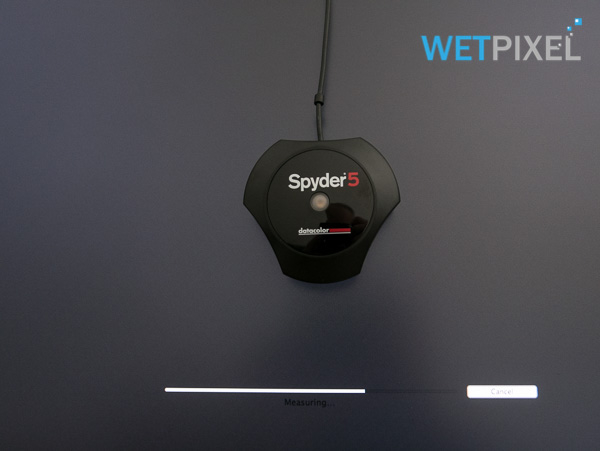
On the subject of this, monitor appearance is affected by ambient light. This means that in order to provide completely consistent results, the light in the editing area needs to be controlled. Calibrating laptops, which are often moved about, will not provide completely reliable results (although a calibrated laptop monitor will be better than an un-calibrated one!). In addition, the screen angle will affect the appearance of the screen. If you are using a laptop and the color calibration is critical, it is recommended that you calibrate the screen immediately prior to using it, and do not move the laptop until you have completed the task.
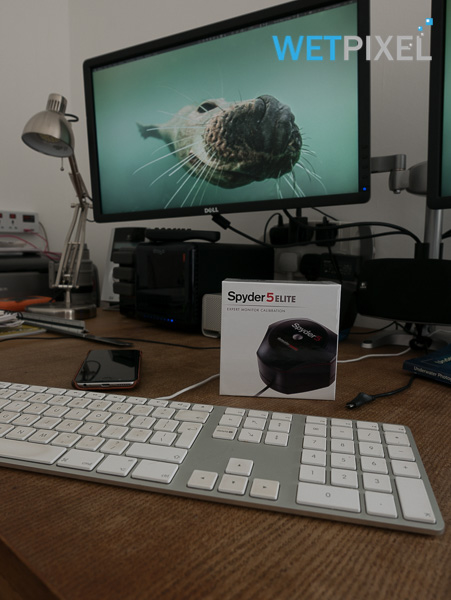
Conclusion.
The Spyder5 is a definite improvement on its predecessors. Although its accuracy is hard to judge empirically, I found that the prints produced while using profiles generated by it were consistent in terms of color and gamma. The software is simple to use, but has enough options to keep the most ardent color management specialist happy! The smaller size and the lens cap/cover of the colorimeter makes it very portable, so it is an option that could make its way into the field if required.
If you plan to enhance your images in any way and to share or print them, monitor color calibration is a mandatory process. The Spyder5 provides an excellent option for doing so.
The Spyder5EXPRESS is priced at US$130 or thereabouts, the Spyder5PRO at US$190, and the Spyder5ELITE at US$280. In Europe, they retail at €99, €149 and €216 (ex. VAT) rrspectively. They are available via Datacolor USA, Datacolor Europe, many camera and imaging shops (please support your local retailer) or via Amazon and other online retailers.
FTTC statement.
The reviewer was provided with a Spyder5ELITE for use in the review free of charge.